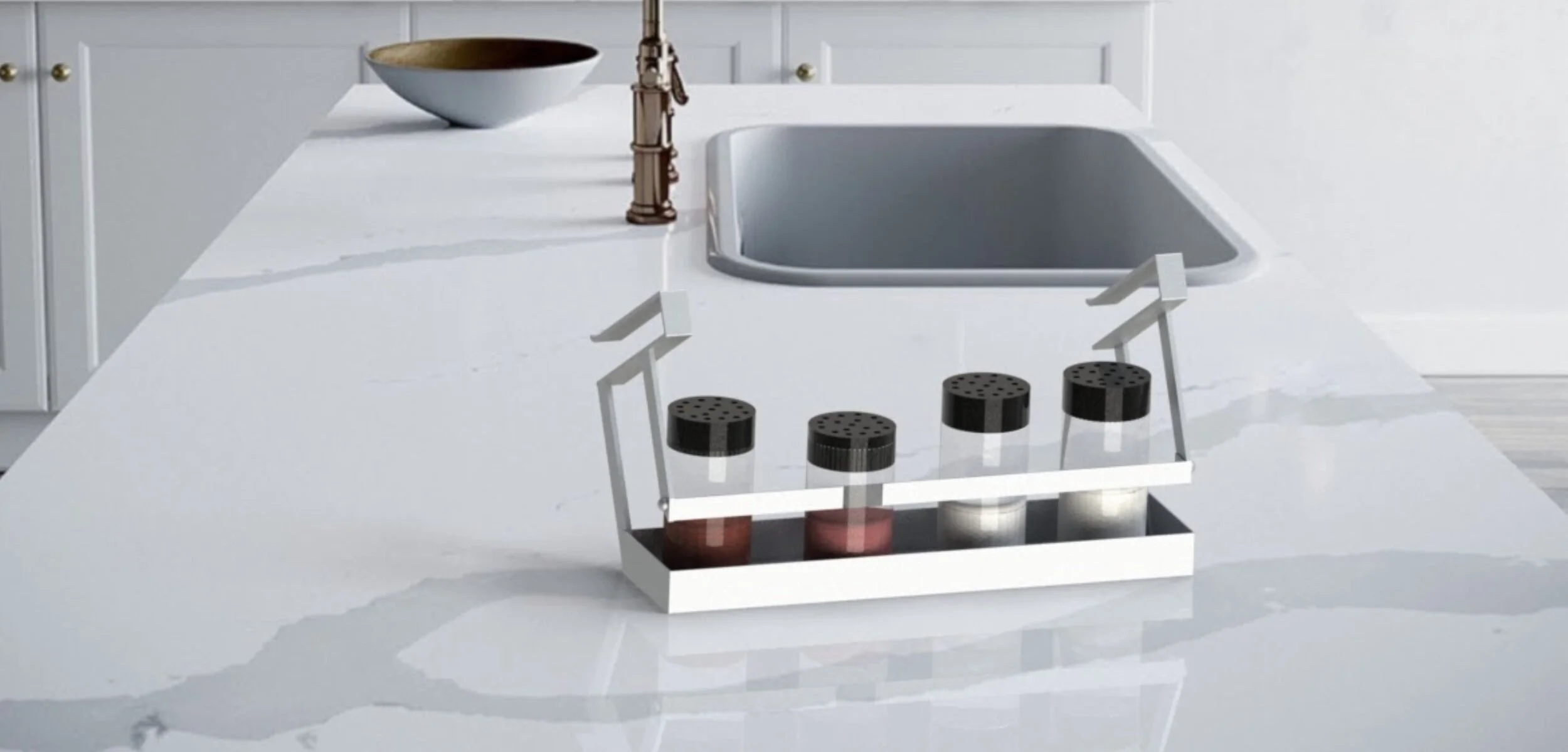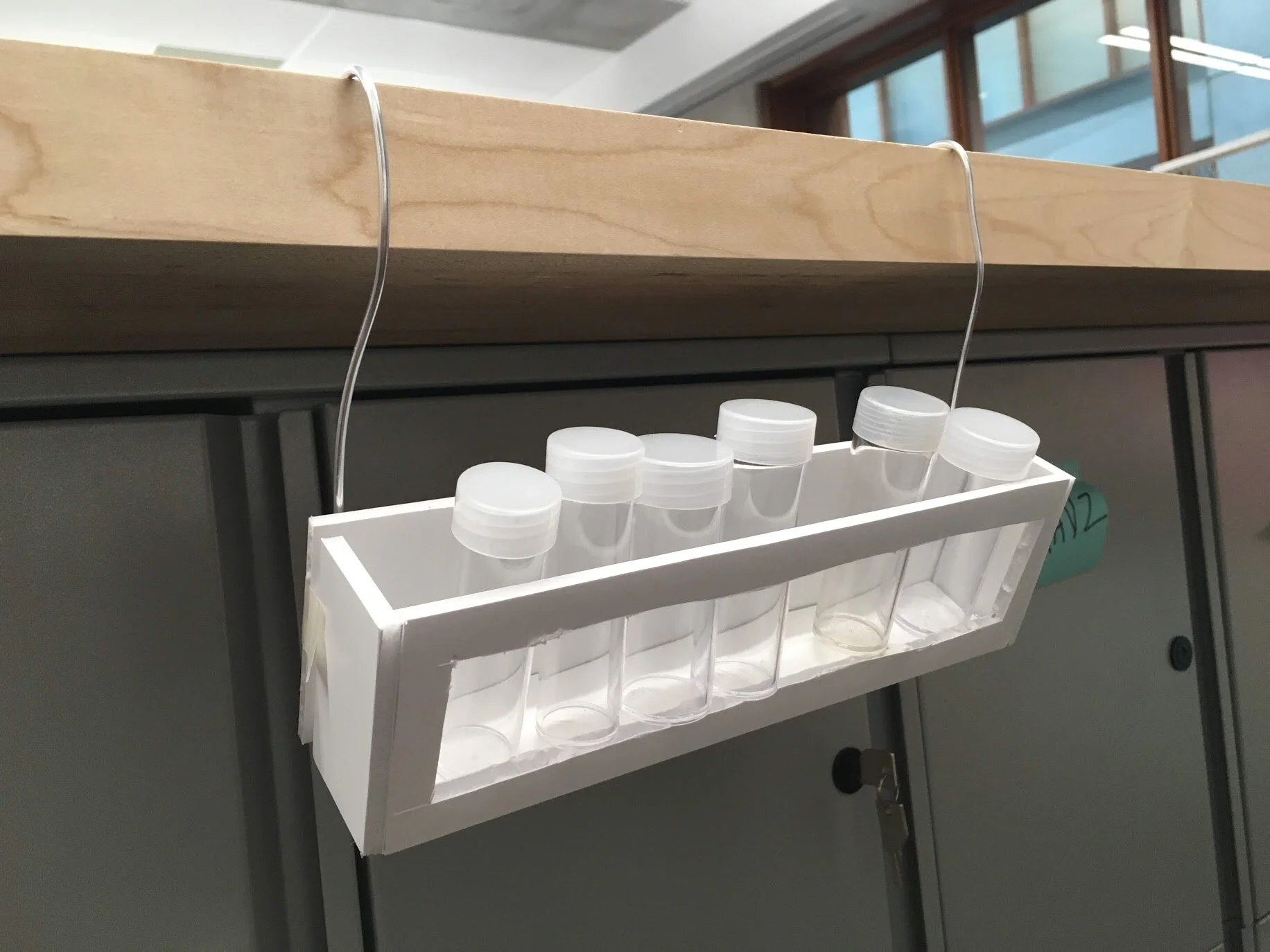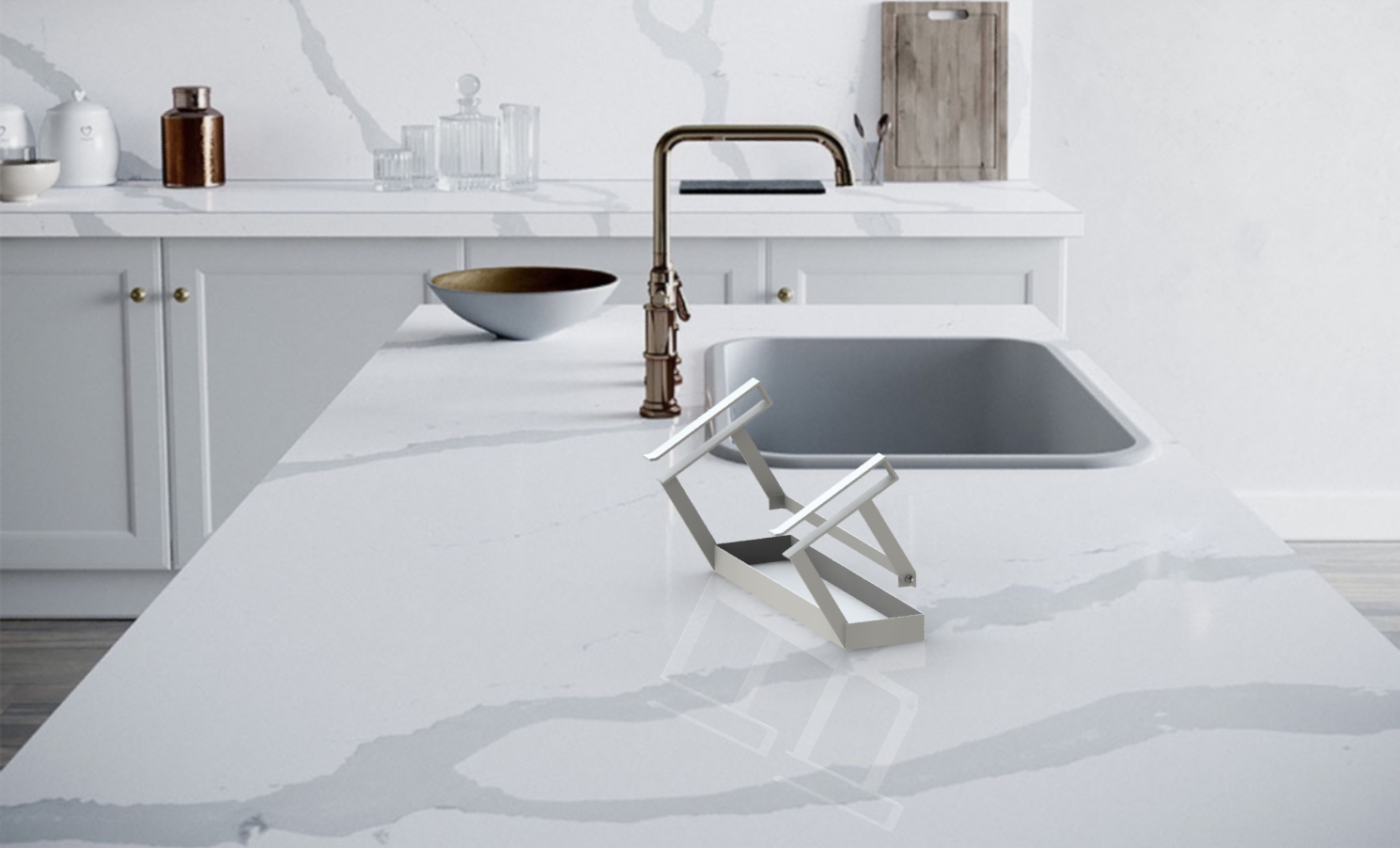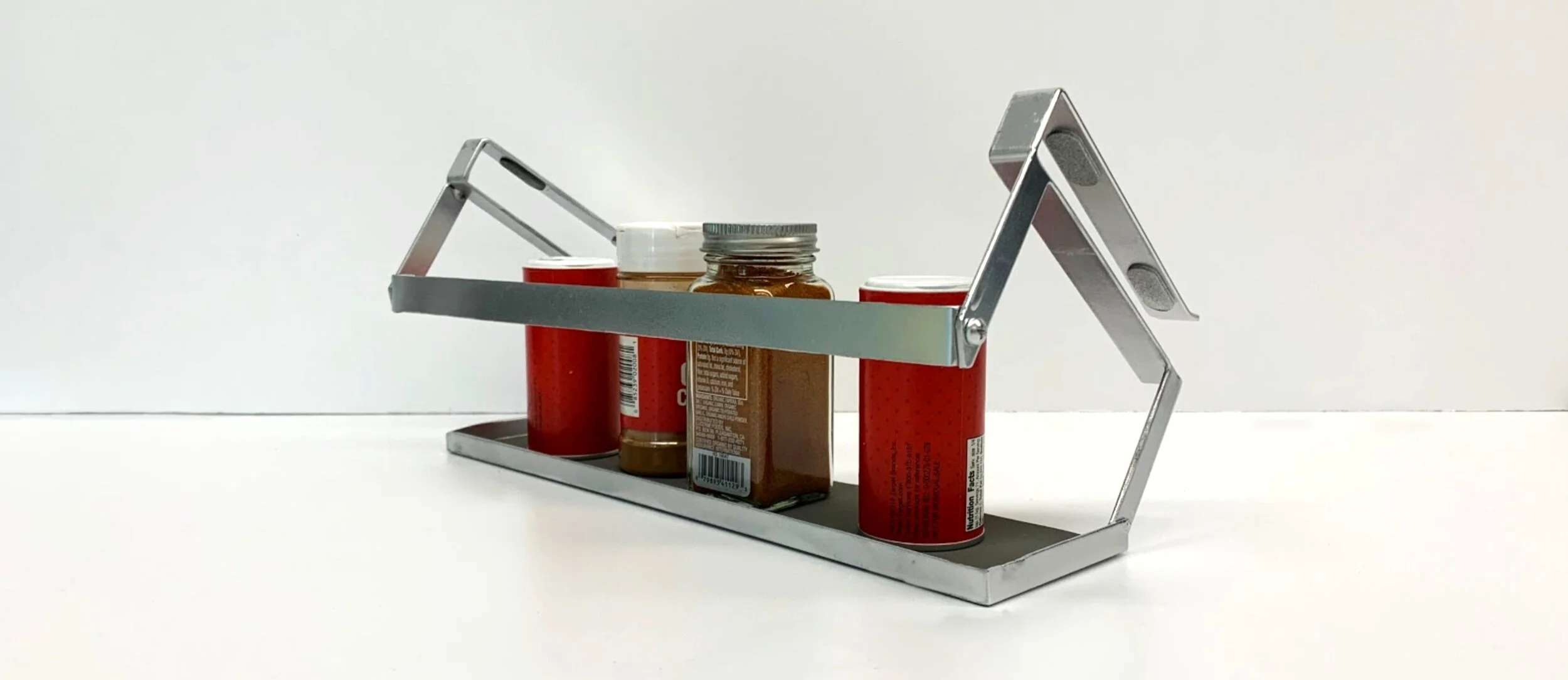BEVL: AN ELEGANT SPICE RACK TO SAVE SPACE
Project Overview:
At the start of 2020, I was tasked with finding a gap in the kitchen-product market and designing a business-viable solution. Deliverables included a looks-like/feel-like prototype and a succinct pitch to sell the idea. BEVL, my proposed product, is a convenient spice rack that can be easily moved around your kitchen, and even hung from your shelf, while still firmly holding all your spice bottles.
The Researching:
I began my design process by identifying design potential in the kitchen-product market. From interviewing a few kitchen-owners and cooking aficionados, I found that a lot of people require work-arounds and DIY solutions to save space in their kitchen. With this valuable insight, I decided my goal was to save space in one’s kitchen.
From a second round of interviewing, I found that people wished their spices were better organized without costing too much or taking up too much space. I investigated the spice rack market, and by comparing the most popular racks available I identified a gap in the market for a portable spice rack that could fit a variety of spice bottle sizes.
The Brainstorming
For five minutes undisturbed, I jotted down whatever ideas I could to solve for a space-saving spice rack. By the end I had a list of concepts ranging from spice bottles that hung from the ceiling, to a rack that pops up from the kitchen top. It was evident from these ideas that space-saving spice rack needed to make use of negative space in the kitchen.
I thus had three major design requirements to guide me further: the solution should utilize negative space, be movable around the kitchen, and fit a variety of spice bottle sizes. With these in mind, I grabbed a pen and paper and drew anything that came to mind. With scores of sketches in front of me, I picked and grabbed ones that satisfied certain requirements.
Majority of the concepts involved an overhanging spice rack. In order to be portable, it had to have flat-standing functionality. And in order to fit different sized spice bottles, it had a to have a secure enclosure. I thus pinpointed my design features to satisfy my design requirements.
The Prototyping:
With basic features of the product in mind, I went about prototyping the concept as a looks-like/feels-like model.
MOCK-UP
Initially I mocked up a low-fidelity structure to convey the idea of the spice rack. Using aluminum wire and foam core, I constructed the basic model and used plastic pill bottles to represent spice bottles. I presented this idea to users and got feedback on the design’s usability and intuitiveness. I continued to iterate similar fidelity models till users showed a willingness to purchase such a product.
RENDER
I then worked on the final pitch design. I modeled the structure of the spice rack on Solidworks using basic measurements from my mock-ups. To ensure easy slip-on/slip-off from a kitchen shelf, the spice rack has two flat arms that can slide smoothly. To prevent spice bottles from falling out, the base has four high walls, as well a front beam to protect the bottles when hanging. The 3D model dictated the specifications for making the physical prototype next.
CONSTRUCT
Finally, I worked on a physical manifestation of the spice rack. Through a rigorous process of sand blasting, drilling, screwing, and spot-welding, I developed a working model from flat aluminum. For the final touches, I spray-painted the model with a matte-aluminum finish and placed a rubber mat on the base to hold the spice bottles in place.
The Final Pitch:
BEVL is a spice rack for people who cook frequently and want to save space in their kitchen
BEVL can:
Hang from a shelf
Rest flat on a kitchen top
Fit various sized spice bottles
The BEVL is all aluminum, manufactured by bending, stamping, and riveting.
Price estimate: $15-20
Takeaways:
User Research: Brainstorming is much easier if you ask users about their work-arounds for their problems
Ideation: Dilute your research synthesis to a set of design requirements as a way to guide your ideation
Manufacturing: Have form variations of your concept at the ready to quote in order to find the lowest-cost estimate
Pitching: A successful pitch presents an effective hook, credible relevance, and convincing feasibility










